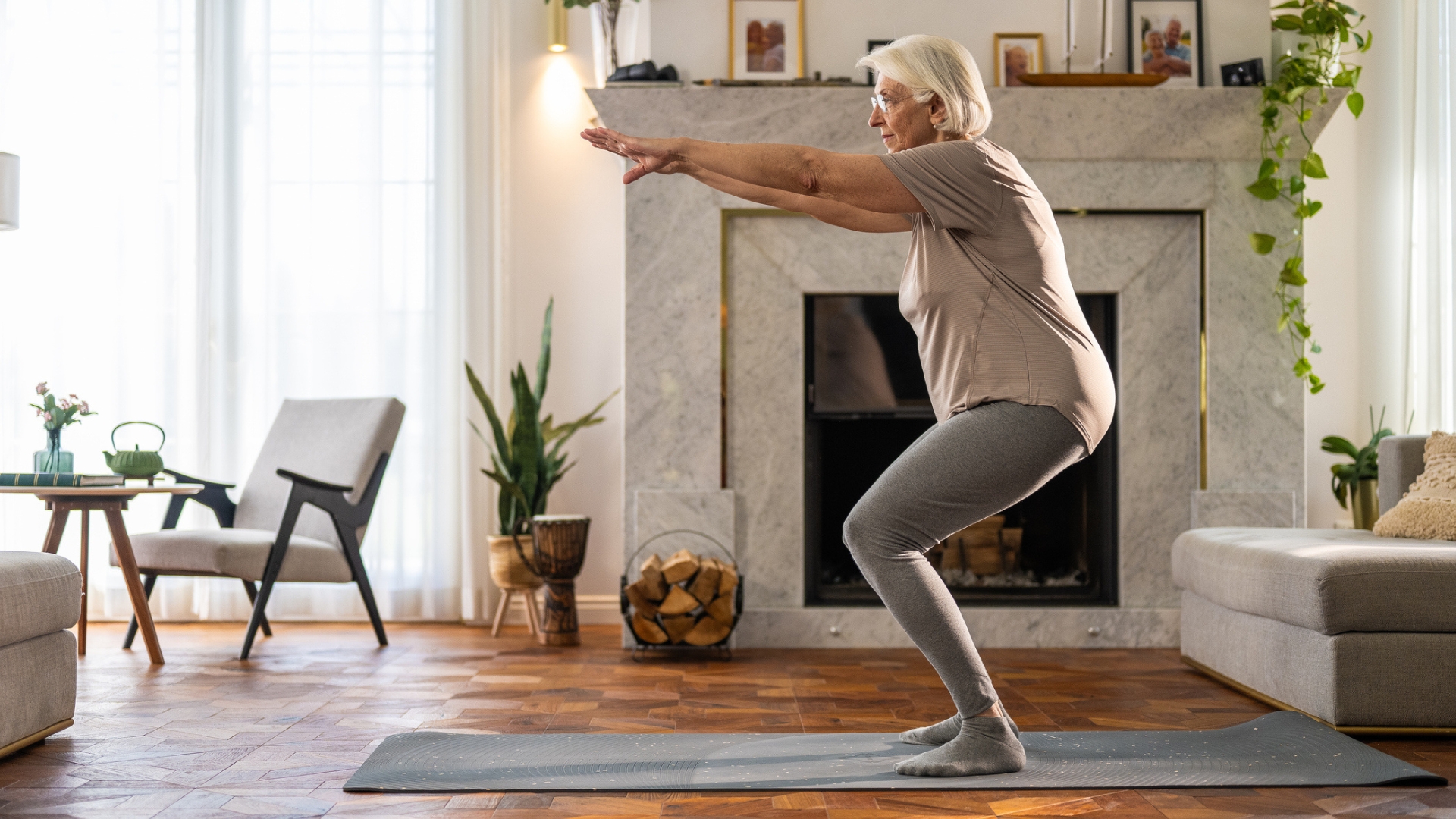I tried this expert’s somatic Pilates routine and it released tension and boosted my energy levels in just 10 minutes
I focused on how my body felt, not looked


I’m a big fan of Pilates. Over the past year, I’ve tried mat, wall, aerial and reformer Pilates and I’ve experienced the many benefits the slow, controlled, full-body workout offers.
So, when I spotted somatic Pilates doing the rounds on my social media, my interest was piqued.
"Somatic movement is about focusing on your internal experience rather than the external appearance of the movement," explains Regan Rutledge, certified Pilates, yoga and Gyrotonic® teacher and owner of Regan movement.
"While traditional mat Pilates emphasizes structured exercises aimed at building strength, increasing flexibility, and improving posture, Somatic Pilates takes a more introspective approach," says Rutledge. "The focus is less on performing the movement perfectly and more on how the body feels and responds as it moves."
Intrigued, I rolled out my mat and tried Beth Sandlin's 10-minute somatic Pilates online class. Here’s what I discovered.
How to do Beth Sandlin’s 10-minute morning somatic Pilates routine
What I learned from doing this 10-minute somatic Pilates workout
Staying present was a challenge
Somatic Pilates challenged me to listen to my body’s signals and focus on my internal sensations like thoughts, feelings and senses, as I moved through each exercise.
I asked myself questions like "What feels good right now?", "Does my spine feel happy in this position?" and "Do I need to spend longer here?".
Get the Fit&Well Newsletter
Start your week with achievable workout ideas, health tips and wellbeing advice in your inbox.
At first, this felt strange. I’m used to focusing on my form or letting my mind wander during workouts. But Sandlin’s class forced me to connect with my body and stay fully present.
My body felt relaxed
Like many people, I’m always busy and on the go—working, seeing friends and family and trying to avoid being too busy.
However, in just 10 minutes, the slow somatic Pilates practice put me in a relaxed state of mind. With movements like the Pilates roll-down and the slower-than-usual cat-cows, I could feel the tension in my back gently release, allowing me to relax more fully.
Rutledge explains: "The somatic approach activates the brain’s ability to retrain the nervous system, allowing you to move with less tension and more efficiency. This deeper connection to the body not only enhances strength and flexibility but also reduces stress and promotes relaxation."
I felt energized and ready to start my day
I spend most of my working day sitting in front of a screen, often leading to achy hips and spine. But this somatic Pilates practice helped alleviate that tension.
Instead of starting my morning feeling stiff, I felt like I’d hit the restart button, physically and mentally. It was the reset I never knew I needed.
Becks is a freelance journalist and writer with more than 7 years of experience in the field. She writes health and lifestyle content for a range of titles including Live Science, Top Ten Reviews, Tom’s Guide, Stylist, The Independent, and more. She also ghostwrites for a number of Physiotherapists and Osteopaths.
Health has been a big part of Becks’ lifestyle since time began. When she’s not writing about the topic of health, she’s in the gym learning new compound exercises. And when she’s not in the gym, she’s most probably reading.
-
 Put down the protein shake—this high-protein chicken and rice recipe is a better way to refuel after a workout
Put down the protein shake—this high-protein chicken and rice recipe is a better way to refuel after a workoutAnd it only takes 10 minutes to make
By Lou Mudge
-
 The three Pilates exercises every beginner should start with, according to an expert instructor
The three Pilates exercises every beginner should start with, according to an expert instructorA sequence that will take you no more than 10 minutes
By Alice Porter